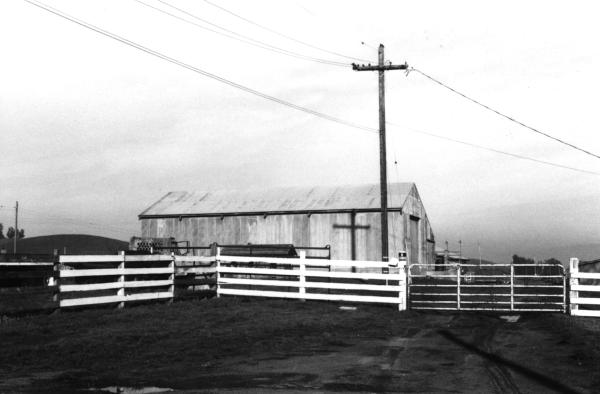
|
|
Farmyard structures near the rocks for which Two Rock is named.
|
|
When I was seven years old, my family moved into this big house in a small
town called Forestville, in California. Forestville, like many small Sonoma
County towns, was emerging from a long period of being a small farming
village. Some people still kept cows, and on the outskirts of town you could
see the grape vines that marked the advent of the new agriculture. Up the road from our house, less than a quarter mile away, and set about 200 feet back from the road, was this old barn. Its spine sagged, and over the years I watched as it succumbed to the ravages of time and the creeping branches of blackberry vines. I remember someone told me once that the place was full of black widows. I'm sure someone else told me it was haunted. Either way, it always gave me the creeps. But it also made me kind of sad, too, thinking about what that barn must have looked like when it was new, when people used it. Perhaps it had been home to 10 cows, with a hayloft on the second floor and a chute through which you'd toss the feed down to hungry animals.
|
By the time we moved to Forestville, those barns that weren't falling apart
sometimes took on a second life as garages or storage sheds. As children we
were told not to play in them: they might collapse. Later, the sight of
sagging barns became a kind of wistful commentary on the state of farming,
both in Sonoma County and nationwide. In 1998 I moved to Petaluma and lived among farms again, where retired agricultural buildings disintegrate among functional, active ranches. I set out to try and document some of these - the ones that are coming apart and the ones that are still used today. This is the result. It's far from complete; there are hundreds of barns in Petaluma alone, let alone Sonoma County. Some are more picturesque than others. Many are hidden and difficult to photograph from public land; others are buried in rusted-out vehicles or vines. But all are a reminder of what is rapidly becoming a bygone era. Vintners don't need barns the same way dairy or beef ranchers do; for that reason the structures seem like a dying art. Those that remain stand as a reminder of where we've been, if not of where we're going. |